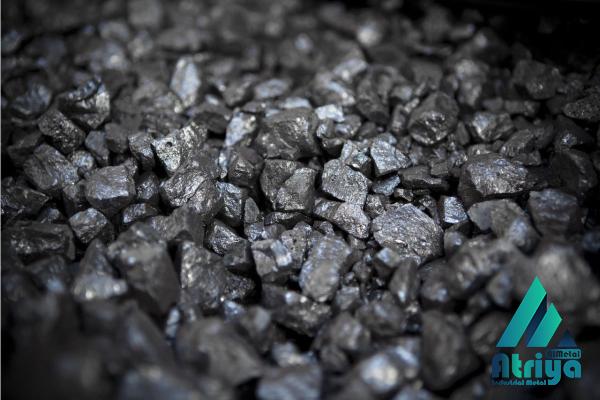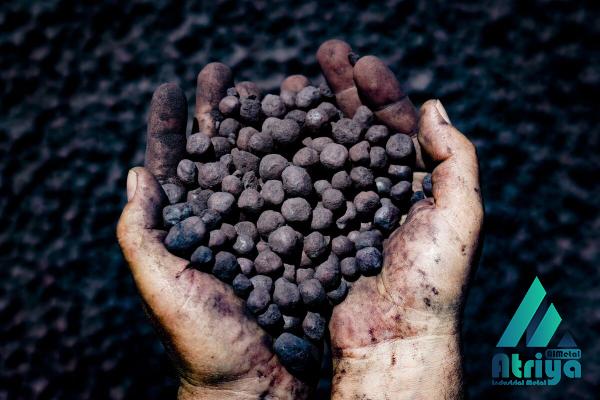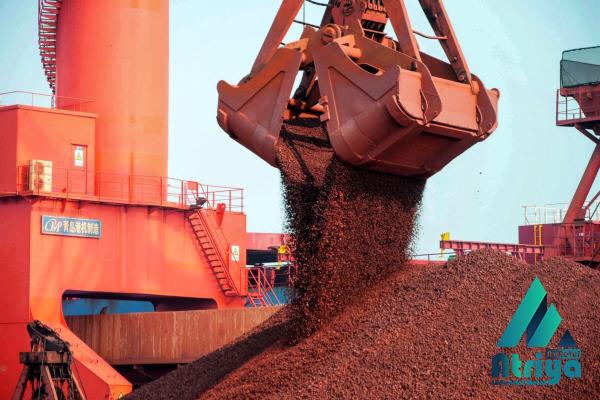The traditional method of producing iron and steel involves the use of high-grade coking coal as a reducing agent in a blast furnace. However, with an increasing focus on sustainable practices, alternative methods such as direct ammonia reduction of iron ore have gained attention. This method offers numerous advantages, including reduced carbon emissions, increased energy efficiency, and the opportunity to utilize low-grade iron ore. This article provides a comprehensive summary of the direct ammonia reduction process, its benefits, and its potential implications for the steel industry. Background: Iron is a vital component in the manufacturing of various products, and the global steel industry is responsible for a significant portion of carbon dioxide emissions, contributing to climate change. The direct ammonia reduction process holds promise as a more sustainable alternative, as it requires minimal use of fossil fuels and can significantly lower emissions. By leveraging nitrogen-based chemistry, this technique offers a more environmentally friendly route to iron production. Direct Ammonia Reduction Process: The direct ammonia reduction of iron ore involves the use of ammonia gas (NH3) as a reducing agent instead of coking coal. In this process, a mixture of iron ore (hematite or magnetite) and ammonia gas is heated to elevated temperatures (400-600 degrees Celsius) in a reactor. The reaction produces iron (Fe) and nitrogen gas (N2) as by-products.
iron
 Benefits of Direct Ammonia Reduction: 1. Reduced Carbon Emissions: Perhaps the most significant advantage of the direct ammonia reduction process is its potential to significantly lower carbon dioxide emissions. As the world seeks to mitigate the impact of climate change, this innovation presents an attractive alternative to traditional iron and steel manufacturing methods that heavily rely on fossil fuels. 2. Energy Efficiency: The direct ammonia reduction process has been found to be more energy-efficient compared to conventional steelmaking. By eliminating the need for coke ovens and blast furnaces, this alternative method can reduce energy consumption and associated costs. 3. Utilizing Low-Grade Iron Ore: Direct ammonia reduction can offer an opportunity to utilize low-grade iron ore deposits that are currently considered economically unviable. This can expand the availability of iron ore resources and mitigate reliance on high-grade deposits, which are depleting rapidly.
Benefits of Direct Ammonia Reduction: 1. Reduced Carbon Emissions: Perhaps the most significant advantage of the direct ammonia reduction process is its potential to significantly lower carbon dioxide emissions. As the world seeks to mitigate the impact of climate change, this innovation presents an attractive alternative to traditional iron and steel manufacturing methods that heavily rely on fossil fuels. 2. Energy Efficiency: The direct ammonia reduction process has been found to be more energy-efficient compared to conventional steelmaking. By eliminating the need for coke ovens and blast furnaces, this alternative method can reduce energy consumption and associated costs. 3. Utilizing Low-Grade Iron Ore: Direct ammonia reduction can offer an opportunity to utilize low-grade iron ore deposits that are currently considered economically unviable. This can expand the availability of iron ore resources and mitigate reliance on high-grade deposits, which are depleting rapidly.
Specifications of iron
 4. Flexibility in Steel Production: This method allows for a flexible operational scale, making it suitable for both large-scale industrial applications and smaller decentralized steel plants. The flexibility and scalability of direct ammonia reduction offer a viable solution for meeting the diverse steel production needs of different regions. Challenges and Considerations: While direct ammonia reduction brings several benefits, there are several challenges and considerations that need to be addressed before its widespread adoption. 1. Ammonia Sourcing: Ensuring a sustainable and reliable supply of ammonia will be crucial. Currently, the primary source of ammonia is derived from natural gas. Transitioning to renewable sources of ammonia, such as green or blue ammonia, will be essential to make the process truly sustainable. 2. Process Optimization and Scale-up: Further research and development are required to optimize the direct ammonia reduction process and scale it up for industrial-level production. This includes refining the reaction conditions, reactor design, and separation techniques to enhance process efficiency and overall performance. 3. Economic Viability: The economic feasibility of direct ammonia reduction must be thoroughly evaluated. While this method offers advantages like using low-grade iron ore, the overall cost competitiveness compared to traditional methods needs to be assessed. 4. Environmental Impacts: Although the direct ammonia reduction process reduces carbon emissions, the production of ammonia itself can have environmental consequences. Proper management and mitigation of the environmental impacts associated with ammonia production, such as nitrogen pollution, will be crucial. Implications for the Steel Industry: The adoption of direct ammonia reduction could have far-reaching implications for the steel industry.
4. Flexibility in Steel Production: This method allows for a flexible operational scale, making it suitable for both large-scale industrial applications and smaller decentralized steel plants. The flexibility and scalability of direct ammonia reduction offer a viable solution for meeting the diverse steel production needs of different regions. Challenges and Considerations: While direct ammonia reduction brings several benefits, there are several challenges and considerations that need to be addressed before its widespread adoption. 1. Ammonia Sourcing: Ensuring a sustainable and reliable supply of ammonia will be crucial. Currently, the primary source of ammonia is derived from natural gas. Transitioning to renewable sources of ammonia, such as green or blue ammonia, will be essential to make the process truly sustainable. 2. Process Optimization and Scale-up: Further research and development are required to optimize the direct ammonia reduction process and scale it up for industrial-level production. This includes refining the reaction conditions, reactor design, and separation techniques to enhance process efficiency and overall performance. 3. Economic Viability: The economic feasibility of direct ammonia reduction must be thoroughly evaluated. While this method offers advantages like using low-grade iron ore, the overall cost competitiveness compared to traditional methods needs to be assessed. 4. Environmental Impacts: Although the direct ammonia reduction process reduces carbon emissions, the production of ammonia itself can have environmental consequences. Proper management and mitigation of the environmental impacts associated with ammonia production, such as nitrogen pollution, will be crucial. Implications for the Steel Industry: The adoption of direct ammonia reduction could have far-reaching implications for the steel industry.
buy iron
 Here are a few notable points: 1. Sustainable Steel Production: Direct ammonia reduction aligns with the steel industry’s commitment to sustainability and combating climate change. Its adoption would enable the sector to make significant progress in reducing its environmental footprint. 2. Diversification of Iron Ore Resources: Access to low-grade iron ore deposits expands the resource base, reducing dependency on limited high-grade deposits and promoting a more sustainable and resilient steel industry. 3. Regional Economic Development: The flexibility and scalability of direct ammonia reduction allow for the establishment of decentralized steel plants. This can promote regional economic development by creating employment opportunities and driving local infrastructure growth. Conclusion: The direct ammonia reduction of iron ore represents a promising path to sustainable steel production. Its potential benefits, including reduced carbon emissions, increased energy efficiency, utilization of low-grade iron ore, and flexibility in steel production, make it an attractive alternative to conventional methods. While some challenges and considerations exist, continued research, development, and sustainable ammonia sourcing could ensure the successful and widespread adoption of this innovative technique, transforming the steel industry into a more sustainable and environmentally responsible sector.
Here are a few notable points: 1. Sustainable Steel Production: Direct ammonia reduction aligns with the steel industry’s commitment to sustainability and combating climate change. Its adoption would enable the sector to make significant progress in reducing its environmental footprint. 2. Diversification of Iron Ore Resources: Access to low-grade iron ore deposits expands the resource base, reducing dependency on limited high-grade deposits and promoting a more sustainable and resilient steel industry. 3. Regional Economic Development: The flexibility and scalability of direct ammonia reduction allow for the establishment of decentralized steel plants. This can promote regional economic development by creating employment opportunities and driving local infrastructure growth. Conclusion: The direct ammonia reduction of iron ore represents a promising path to sustainable steel production. Its potential benefits, including reduced carbon emissions, increased energy efficiency, utilization of low-grade iron ore, and flexibility in steel production, make it an attractive alternative to conventional methods. While some challenges and considerations exist, continued research, development, and sustainable ammonia sourcing could ensure the successful and widespread adoption of this innovative technique, transforming the steel industry into a more sustainable and environmentally responsible sector.











Your comment submitted.